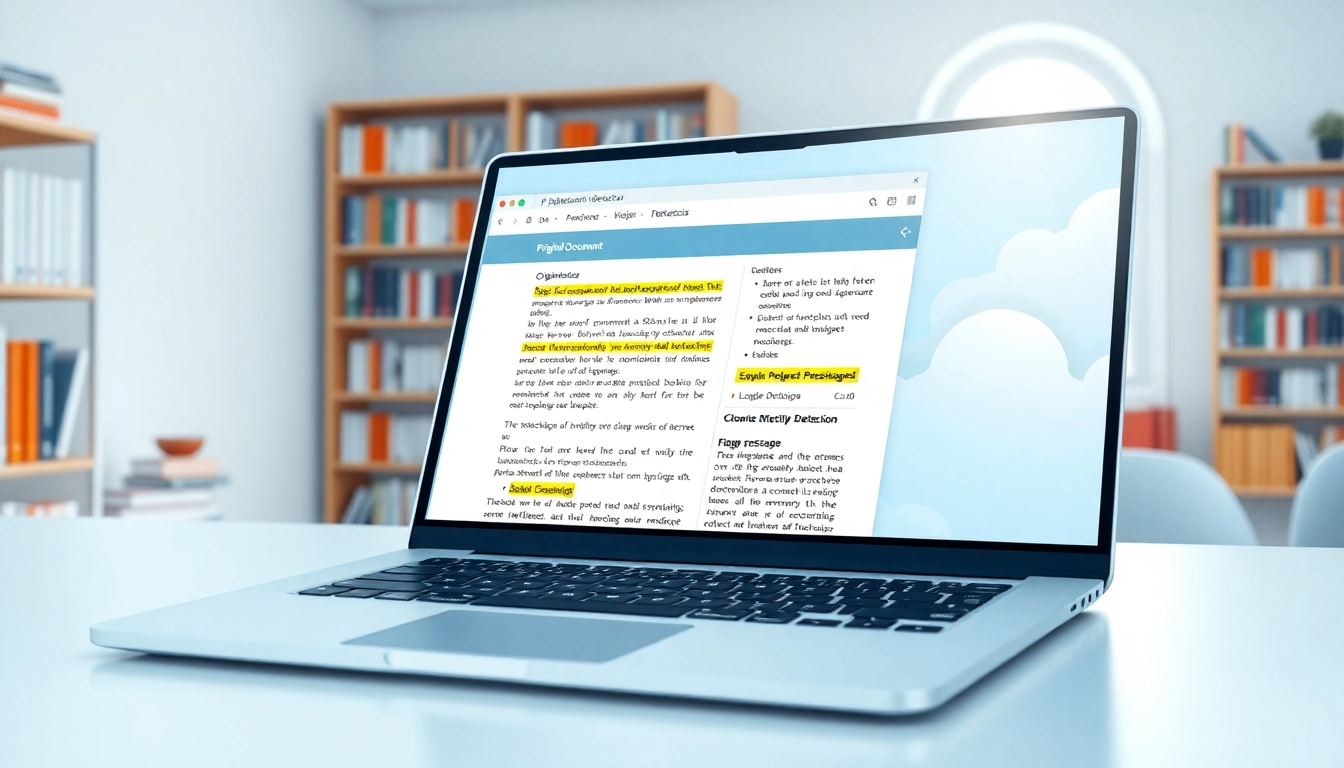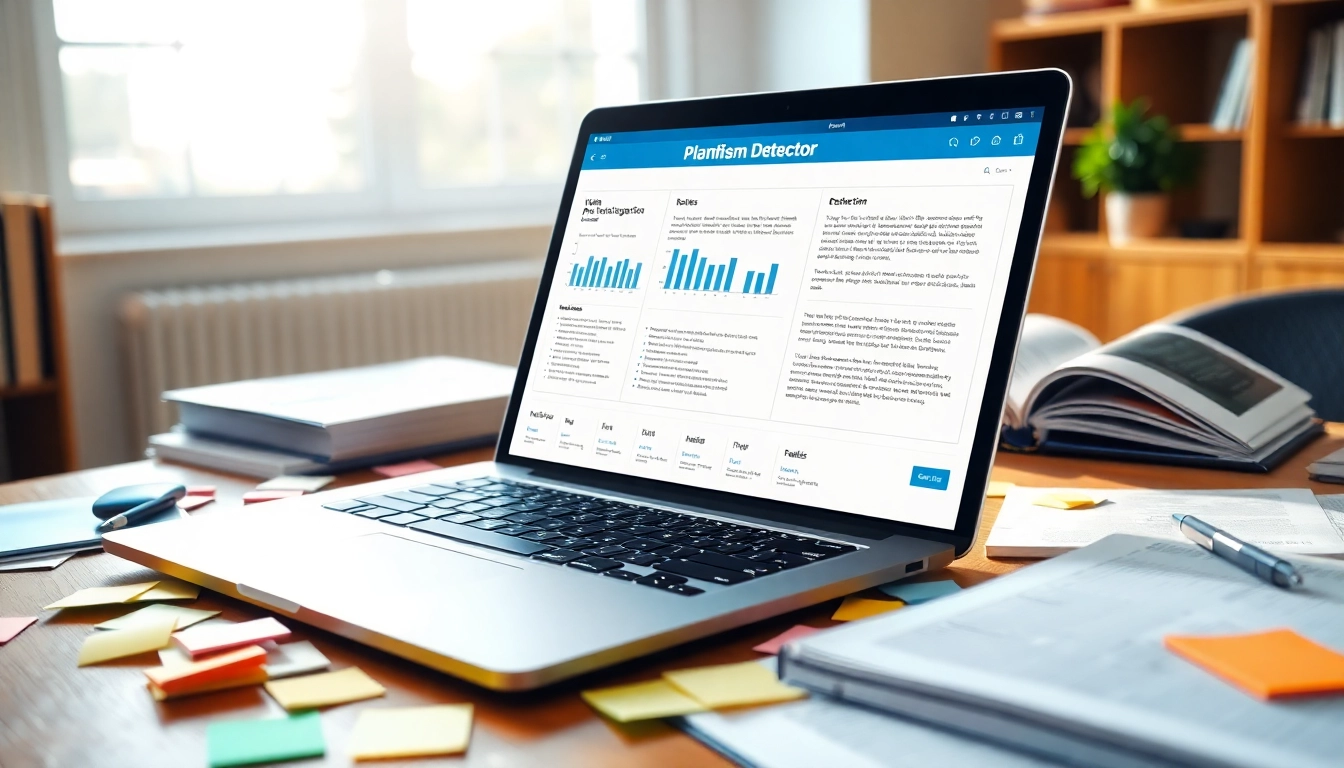Understanding Plagiarism and Its Implications
Plagiarism is a critical issue in the world of academia and professional writing. It refers to the act of using someone else’s work, ideas, or expressions without giving proper credit, thereby presenting them as your original contributions. This not only undermines the integrity of the individual but also compromises the authenticity of the intellectual discourse.
In the digital age, where information is ubiquitous and easily accessible, the temptation to plagiarize can be overwhelming. As such, utilizing a plagiarism detector becomes not just a best practice, but a necessity for students, educators, and professionals alike.
Definition of Plagiarism
Plagiarism occurs when a writer fails to acknowledge the original source of information, ideas, or creative expressions. It can happen intentionally, such as directly copying text, or unintentionally, due to misunderstanding citation rules. The consequences, however, remain equally significant in both scenarios.
Common Types of Plagiarism
Plagiarism can manifest in various forms:
- Direct Plagiarism: Copying text word-for-word without citation.
- Self-Plagiarism: Reusing substantial portions of one’s previous work without acknowledgment.
- Patchwork Plagiarism: Integrating phrases or ideas from multiple sources without proper citation.
- Accidental Plagiarism: Failing to cite sources correctly or misunderstanding how to paraphrase effectively.
Consequences of Plagiarism in Academia
The repercussions of plagiarism are severe. In academic settings, students caught plagiarizing can face disciplinary actions, ranging from a failing grade on an assignment to expulsion from the institution. Beyond academia, professionals found guilty of plagiarism may suffer damage to their reputation and career prospects, as plagiarism undermines trust and credibility. Additionally, legal implications could arise if copyrighted material is used without permission.
The Functionality of Plagiarism Detectors
With the increasing prevalence of plagiarism, the role of plagiarism detectors has become vital. These tools are designed to scan written work for potential instances of plagiarism by comparing the content against a vast database of sources.
How Plagiarism Detectors Work
Plagiarism detectors utilize algorithms that analyze the text’s structure and content. They check for similarities between the submitted writing and various databases, encompassing academic papers, articles, and web pages. The key functionalities involve:
- Text Matching: Identifying phrases and structures that match existing published works.
- Content Analysis: Understanding the context of phrases and how they relate to other documents.
- Reporting: Providing users with a detailed report outlining matched content and similarity percentages.
Key Features to Look for in a Plagiarism Detector
When selecting a plagiarism detection tool, consider the following essential features:
- Accuracy: High detection rates and low false positives are critical.
- Comprehensive Database: A robust database that includes various sources maximizes the tool’s effectiveness.
- Real-time Scanning: The ability to quickly analyze documents can save time in tight academic settings.
- User-friendly Interface: An intuitive design facilitates ease of use, especially for students and educators.
Comparative Analysis of Top Plagiarism Detectors
To illustrate the utility of plagiarism detectors, here’s a brief comparative analysis of some notable tools available:
- Grammarly: Known for its AI-powered grammar checking, Grammarly also offers a reliable plagiarism checker that scans billions of web pages and academic databases.
- DupliChecker: A completely free tool, DupliChecker allows users to copy and paste their work for plagiarism detection. It’s straightforward but may have limitations in comprehensive analysis.
- Scribbr: This tool provides a unique feature by comparing submitted work against multiple databases, including theses and dissertations, offering a robust plagiarism check.
- Copyleaks: Focused on educational institutions, Copyleaks is designed to detect plagiarism in student submissions and includes an AI content detection feature.
Benefits of Using a Plagiarism Detector
Implementing plagiarism detection technologies presents numerous advantages, particularly in maintaining the integrity and quality of written work.
Improving Writing Quality
Plagiarism detectors compel writers to enhance their originality. As users receive feedback on plagiarized content, they are motivated to improve their writing, leading to more nuanced and creative expression.
Boosting Academic Integrity
For educational institutions, maintaining academic integrity is paramount. By employing plagiarism detection tools, educators can uphold standards and foster an environment of honesty. Students are more likely to engage with their research authentically, understanding the value of their contributions.
Saving Time and Resources for Educators
Automated plagiarism detection saves educators valuable time in grading and assessment. Instead of manually checking for originality, teachers can focus on providing constructive feedback, enhancing the learning experience for students.
Best Practices for Using Plagiarism Detectors
While plagiarism detectors are invaluable tools, their effectiveness depends on proper usage. Here are some best practices to maximize their benefits:
Tips for Ensuring Effective Use
When using plagiarism detectors, it’s essential to:
- Ensure that the text is submitted in the correct format for analysis.
- Review the software’s report thoroughly, understanding which sections need revision or citation.
- Utilize the tool at different stages of the writing process to ensure originality from the onset.
Integrating Detectors into the Writing Process
To effectively incorporate plagiarism detectors into writing practices, writers should consider using them early in their workflow—right after drafting, and again after editing. This negates the risk of overlooking citations or accidental plagiarism.
Common Mistakes to Avoid
Despite their advantages, users often make mistakes that undermine the benefits of plagiarism detection:
- Over-reliance: Relying solely on detectors without understanding citation rules or proper paraphrasing techniques can lead to issues.
- Ignoring Feedback: Disregarding the suggestions provided by the detector means missing opportunities for improvement.
- Inconsistent Use: Infrequent checks can lead to high instances of undetected plagiarism, particularly in longer documents.
The Future of Plagiarism Detection Technology
The landscape of plagiarism detection is continuously evolving, particularly with advancements in technology. The integration of artificial intelligence and machine learning stands to revolutionize the accuracy and efficiency of plagiarism detection tools.
Emerging Trends in Plagiarism Detection
Upcoming trends include:
- Enhanced AI algorithms that adapt and learn from user behavior.
- Integration with educational management systems to provide seamless plagiarism checks during the submission process.
- Real-time content analysis for online writings and blogs to ensure consistent original content.
AI and Machine Learning in Plagiarism Detection
The introduction of AI capabilities will allow tools to better understand context, nuance, and the original intent behind writing, making it easier to differentiate between common phrases and actual plagiarism. As these technologies develop, the effectiveness and reliability of plagiarism detection will significantly improve.
The Role of Educators in Adapting to New Technologies
As technology advances, educators must adapt by integrating these tools thoughtfully into curriculum design. Training programs that educate students on ethical writing practices, combined with the use of updated plagiarism detection tools, will cultivate a culture of integrity and originality in academia.















Leave a Reply